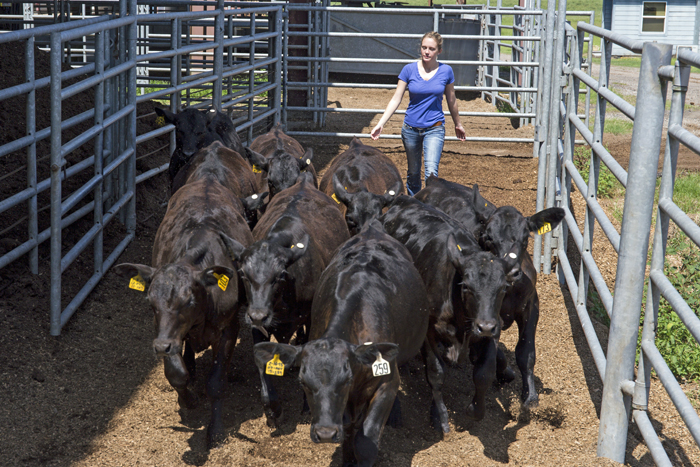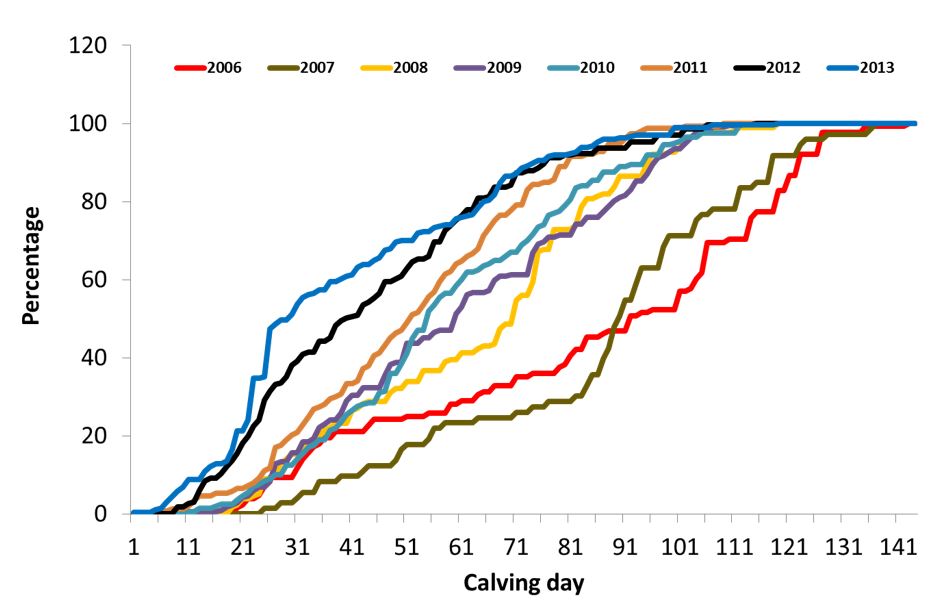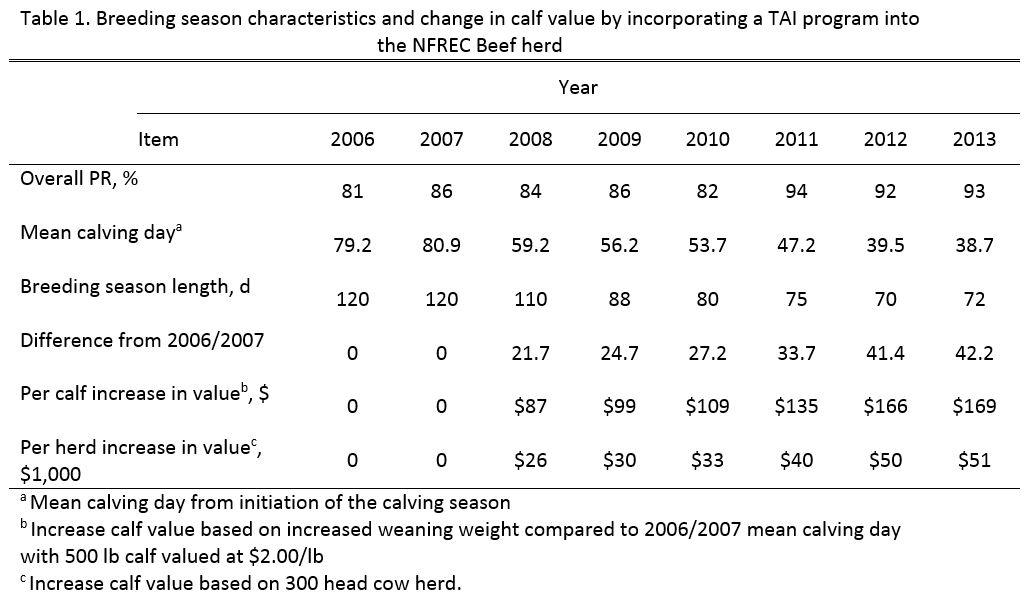
A uniform set of calves at the University of Florida NFREC ready for market. They are the result of a disciplined estrus synchronization and artificial insemination program. Photo credit: Tyler Jones
Cliff Lamb, University of Florida – North Florida Research and Education Center, Marianna, FL
Estrous synchronization (ES) and artificial insemination (AI) are reproductive management tools that have been available to beef producers for over 50 years. Synchronization of the estrous cycle has the potential to shorten the calving season, increase calf uniformity, and enhance the possibilities for utilizing AI. Artificial insemination allows producers the opportunity to infuse superior genetics into their operations at costs far below the cost of purchasing a herd sire of similar standards. These tools remain the most important and widely applicable reproductive bio-technologies available for beef cattle operations (Seidel, 1995). However, beef producers have been slow to utilize or adopt these technologies into their production systems.
Current research has focused on the development of methods that effectively synchronize estrous in postpartum (after calving) beef cows and replacement beef heifers by decreasing the period of time over which estrus detection is required, thus facilitating the use of fixed-time artificial insemination (TAI). This new generation of estrus synchronization protocols uses two strategies which are key factors for implementation by producers because they: 1) minimize the number and frequency of handling cattle through a cattle-handling facility; and 2) eliminate detection of estrus (heat) by employing TAI. Producers receiving all the necessary, applicable information packaged to include, but not limited to, protocol administration, economic implications, and genetic improvements to the cowherd are more apt to implement these tools into their management systems, and achieve positive outcomes as a result.
Recently we performed an experiment using partial budget analysis to determine the economic outcome of estrus synchronization and TAI in commercial cow/calf production. Suckled beef cows were assigned randomly within each of eight locations to 1 of 2 treatment groups: 1) cows were inseminated artificially after synchronization of ovulation using the 7-day CO-Synch + CIDR protocol (TAI); and 2) cows were exposed to natural service (NS) without estrous synchronization (Control). Within each herd, cows from both treatments were maintained together in similar pastures and were exposed to bulls 12 hours after the last cow in the TAI treatment was inseminated. Overall, the percentage of cows exposed to treatments that subsequently weaned a calf was greater for TAI (84%) than Control (78%) cows. In addition, survival analysis demonstrated that cumulative calving distribution differed between the TAI and Control treatments. Weaning weights per cow exposed to treatments were greater for cows in the TAI treatment (425 lb) than those cows in the Control treatment (387 lb). Overall, increased returns, plus decreased costs ($82.32), minus decreased returns plus increased costs ($33.18) resulted in a $49.14 advantage per exposed cow in the TAI treatment compared to the Control treatment. Location greatly influenced weaned calf weights, which may have been a result of differing management, nutrition, genetic selection, production goals, and environment. We concluded that estrus synchronization and TAI had a positive economic impact on subsequent weaning weights of exposed cows.

Figure 1. Cumulative calving by year for two years (2006 and 2007) prior to introducing TAI and five years (2008 to 2013) after introducing TAI.
As a result of the previous study and using our knowledge of the many reproductive technologies, we incorporated multiple reproductive technologies on the subsequent value of the calf crop in a case study conducted at the University of Florida’s North Florida Research and Education Center (NFREC) located in Marianna, FL. This case study was conducted during the spring 2008 through the spring 2013 breeding seasons, in a cow/calf operation consisting of 300 cows. Prior to the 2008 breeding season the herd was exposed to a 120 day breeding season. The goal was to reduce the breeding season to 70 days within 4 years. To do this, it was decided, in 2008, that all females in the operation would be exposed to the following criteria: 1) replacement heifers must become pregnant during the first 25 days of the breeding season; 2) every cow will be exposed to ES and TAI; 3) a cow must produce a live calf every year and calve without assistance or she was culled; 4) every cow must provide the resources for the genetic potential of the calves and each calf she produces must be genetically capable of performing; 5) every cow must maintain body condition score without requiring supplemental feeding; and 6) any cow with an undesirable temperament or disposition was culled. As a result of incorporating multiple reproductive management practices, the breeding season was reduced from 120 to 70 days and almost all cows calved prior to initiation of the breeding season and are exposed to a single TAI at the initiation of the breeding season (Figure 1). The net result is a more compact calving season that has increased the value of calves (in current dollars) by $169 per calf or an annual increase in calf value for the 300 head operation of $50,700 per year (Table 1).
For More information, and the most current recommendations on Estrus Synchronization and Timed A.I. visit the the Beef Reproduction Task Force website:
http://beefrepro.unl.edu/
- Prebreeding Management for Successful Development of Beef Replacement Heifers - December 16, 2016
- Fetal Versus Maternal Contributions of Bos indicus Genetics to Offspring Growth - July 22, 2016
- Understanding Fetal Programming in Cattle - March 11, 2016
